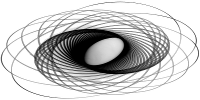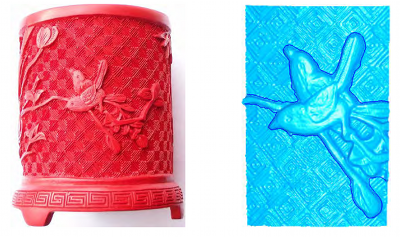S.-L. Liu, R. R. Martin, F. C. Langbein, P. L. Rosin. Segmenting Geometric Reliefs from Textured Background Surfaces. Computer-Aided Design and Applications, 4(5):565-583, 2007. [DOI:10.1080/16864360.2007.10738492] [Published] [PDF]
Segmentation of geometric reliefs from a textured background has various applications in reverse engineering. We consider two approaches to solve this problem. The first classifies parts of a surface mesh as relief or background, and then uses a snake which moves inwards towards the desired relief boundary, which is coarsely located using an energy based on the classification. The second approach initially smoothes the surface to eliminate the background texture, and locates the snake at the relief boundary using an energy based on the step between the background and the relief. Both snakes start at simple user-drawn contours, and are driven towards the relief boundaries by the snake energy functional. In both cases, the snake has different evolution phases with different energy terms, to initially rapidly drive the snake towards the relief boundary, and to later accurately match it. To describe geometric textures, we analyze surface differential properties, and integral and statistical quantities based upon them, computed at multiple scales taken over local neighborhoods, following similar ideas from image texture processing. For classification, we use a support vector machine together with sequential forward floating search for feature selection. A straightforward Laplacian method is used for smoothing. We use example scanned models to demonstrate that both approaches are useful, but are suitable for different types of model.
![]() This work is licensed under a Creative Commons Attribution-NonCommercial-ShareAlike 4.0 International License.
This work is licensed under a Creative Commons Attribution-NonCommercial-ShareAlike 4.0 International License.

